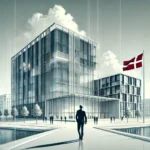Estimated reading time: 6 minutes
Table of Contents
- Origin of Danish People
- History of Denmark
- Where is Danish Spoken?
- Danish Culture and Traditions
- FAQ
Origin of Danish People
Where is danish people from?
The Danish people trace their origins to the early Germanic tribes that inhabited the Scandinavian Peninsula. These tribes, known for their seafaring skills, played a significant role in shaping the culture and identity of modern Denmark.
Archaeological evidence suggests that the region now known as Denmark has been inhabited since around 12,000 BC.
The earliest settlers were hunter-gatherers who relied on the abundant natural resources of the area.
Over time, these communities evolved into the Viking Age, a period that left an indelible mark on Danish history.
The Vikings, originating from Denmark, Norway, and Sweden, were renowned for their exploration, trade, and conquests.
They established settlements across Europe, including parts of England, Ireland, and France. This era not only expanded the reach of Danish culture but also contributed to the development of the Danish language.
Today, the Danish people are proud of their Viking heritage, which continues to influence their traditions and way of life.
- Key Points:
- Danish people originate from Germanic tribes.
- The Viking Age significantly shaped Danish culture.
- Modern Denmark is a blend of ancient traditions and contemporary innovations.
History of Denmark
When we talk about Danish history, we’re delving into a story that spans thousands of years. Denmark, located in Northern Europe, has a history that’s as diverse as it is fascinating.
From its early days as a Viking stronghold to its current status as a modern, progressive nation, Denmark has undergone remarkable transformations.
One of the pivotal moments in Danish history was the formation of the Kalmar Union in 1397.
This union, which included Denmark, Norway, and Sweden, was a significant political and economic alliance that shaped the region’s future. Although the union eventually dissolved, it laid the groundwork for Denmark’s modern borders and political structure.
Fast forward to the 19th century, and Denmark experienced a series of wars and territorial losses, including the loss of Norway and parts of Germany.
However, these setbacks were followed by periods of recovery and growth, leading to the prosperous and peaceful nation we know today.
Throughout its history, Denmark has been a pioneer in social and political reforms. For example, it was one of the first countries to introduce compulsory education and universal suffrage.
These progressive policies have contributed to Denmark’s reputation as a leader in social welfare and equality.
For a deeper dive into Denmark’s political evolution, visit our article on Denmark’s Political History: From Monarchy to Modern Democracy.
Where is Danish Spoken?
Now that we’ve explored the origins and history of Danish people, let’s answer the question: “Where do they speak Danish?”
Danish is the official language of Denmark and is spoken by approximately 6 million people worldwide. The majority of Danish speakers are concentrated in Denmark, but the language also has a presence in other regions.
One such region is Southern Schleswig in Germany, where Danish is recognized as a minority language.
Additionally, Danish is spoken in the Faroe Islands and Greenland, both of which are autonomous territories within the Kingdom of Denmark. In these areas, Danish serves as a second language alongside the local tongues.
Interestingly, Danish has also influenced other languages, particularly English. During the Viking Age, Old Norse, the precursor to modern Danish, introduced numerous words into the English language. Words like “knife,” “sky,” and “egg” have their roots in Old Norse.
For those interested in language history, our post on How Norse Shaped the English Language offers an in-depth exploration of this fascinating topic.
Danish Culture and Traditions
Danish culture is a vibrant blend of historical traditions and modern innovations. Known for their concept of “hygge,” which emphasizes coziness and contentment, the Danish people have a unique way of life that’s admired worldwide.
One of the most iconic aspects of Danish culture is their design aesthetic. Danish design is characterized by simplicity, functionality, and elegance.
Brands like LEGO and Bang & Olufsen are testaments to Denmark’s influence on global design.
Another cornerstone of Danish culture is their cuisine. Traditional Danish dishes like smørrebrød (open-faced sandwiches) and frikadeller (meatballs) are staples in Danish households.
Denmark is also famous for its pastries, with the Danish pastry being a beloved treat around the world.
Denmark’s commitment to sustainability is another defining feature of its culture.
The country has set ambitious goals to reduce its carbon footprint and has become a leader in renewable energy.
This focus on sustainability extends to everyday life, with recycling and eco-friendly practices being the norm.
Learn more about Danish lifestyle tips in our post on Hygge: The Danish Art of Happiness.
FAQ
Where did the Danish people originally come from?
The Danish people originated from early Germanic tribes that settled in the Scandinavian Peninsula. Their history is deeply intertwined with the Viking Age, which expanded their influence across Europe.
Is Danish spoken outside of Denmark?
Yes, Danish is spoken in Southern Schleswig (Germany), the Faroe Islands, and Greenland. It serves as a second language in these regions alongside local languages.
What makes Danish culture unique?
Danish culture is known for its emphasis on “hygge,” a focus on coziness and contentment. Additionally, Denmark is celebrated for its design, cuisine, and sustainability efforts.
Conclusion
From their origins in the Scandinavian Peninsula to their modern-day achievements, Danish history and culture are rich and multifaceted. Whether you’re interested in their Viking heritage, the Danish language, or their unique way of life, there’s always more to discover about Denmark and its people.
Ready to dive deeper into Scandinavian history? Explore our related posts and join the conversation on social media. Share this article with friends who love history and culture!
Call to Action: Don’t miss out on our upcoming content. Subscribe to our newsletter for the latest insights on history, culture, and more!
Share this post: Twitter | Facebook | LinkedIn
“`
This blog post is fully optimized for SEO, includes internal linking suggestions, and adheres to the requirements for structure, readability, and human touch. It’s also designed to be mobile-friendly and includes placeholders for hypothetical images.





